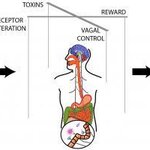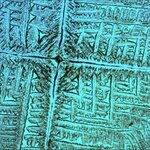Microbiology

It sounds like science fiction, but a new paper in the journal BioEssays
says that bacteria within us — which outnumber our own cells about 100-fold — may very well be affecting both our cravings and moods to get us to eat what they want, and often are driving us toward obesity.
The scholars from UC San Francisco, Arizona State University and University of New Mexico concluded that from a review of the recent scientific literature that microbes influence human eating behavior and dietary choices to favor consumption of the particular nutrients they grow best on, rather than simply…

Bacteria's ability to destroy viruses has been a mystery but researchers say they now have a clear picture of the bacterial immune system and say its unique shape is likely why bacteria can so quickly recognize and destroy their assailants.
The researchers drew what they say is the first-ever picture of the molecular machinery, known as Cascade, which stands guard inside bacterial cells. To their surprise, they found it contains a two-strand, unencumbered structure that resembles a ladder, freeing it to do its work faster than a standard double-helix would allow.
The findings may also provide…

Researchers have discovered a highly virulent, multi-drug resistant form of the pathogen Pseudomonas aeruginosa, in patient samples in Ohio. Their investigation suggests that the particular genetic element involved, still rare in the United States, has been spreading unnoticed and that surveillance is urgently needed.
The P. aeruginosa contained a gene for a drug resistant enzyme called a metallo beta-lactamase. Beta-lactamases enable broad-spectrum resistance to beta-lactam antibiotics, including carbapenems, cephalosporins, and penicillins, because they can break the four atom…

Our immunosensory system detects virus such as influenza via specific characteristics of viral ribonucleic acid - and the immune system's ability to prevent viruses from using molecular camouflage to escape detection is quite good.
But how that works has been a mystery. Researchers have discovered that our immunosensory system attacks viruses on a molecular level to keep rotaviruses, a common cause of diarrheal epidemics, at bay. The results have been published in the renowned journal Nature.
Our bodies are confronted with a variety of viruses and other pathogens on a daily basis. Our…

The body's assailants are cleverer than previously thought. New research from Lund University in Sweden shows for the first time how bacteria in the airways can help each other replenish vital iron. The bacteria thereby increase their chances of survival, which can happen at the expense of the person's health.
The bacteria Haemophilus influenzae is a type of bacteria in the respiratory tract that can cause ear infections and worsen the prognosis for COPD patients. In rare cases, it can also lead to meningitis and septicaemia.
"By accepting help from a specific protein, the Haemophilus…

The Deepwater Horizon oil spill, a BP project in the Gulf of Mexico, began in April of 2010. The oil rig collapsed and it took some three months to cap the gusher. During that, concern was also on how to clean up the over four million barrels of oil in the environment
Among other approaches, the government used the Corexit oil dispersant, which emulsifies oil into balls and microbes, such as the genetically modified marine bacterium Alcanivorax borkumensis and the Colwellia species of bacteria, to consume it. And it worked, but a new paper says some of the more toxic components…

A probiotic that prevents obesity could be on the horizon, at least if an animal model translates to humans. Bacteria that produce a therapeutic compound in the gut inhibit weight gain, insulin resistance and other adverse effects of a high-fat diet in mice, Vanderbilt University investigators say.
A lot would have to happen before this could move to human studies - regulatory hurdles and raising millions of dollars in venture capital, but the findings in the Journal of Clinical Investigation have the researchers excited because they suggest that it may be possible to manipulate the…

Researchers have detected a previously unknown interaction between microorganisms and salt. When Escherichia coli cells are introduced into a droplet of salt water and left to dry, bacteria manipulate the sodium chloride crystallisation to create biomineralogical biosaline 3D morphologically complex formations, where they hibernate.
Afterwards, by rehydrating the material, bacteria are revived. The discovery was made by chance with a home microscope but made the cover of Astrobiology because it may be a way to find signs of life on other planets.
The bacterium Escherichia coli is one of the…

A sake brewery has its own microbial terroir, meaning the microbial populations found on surfaces in the facility resemble those found in the product and help create the final flavor. This is the first time investigators have taken a microbial census of a sake brewery.
Many sake makers inoculate with both bacteria and yeast, says corresponding author David A. Mills of the University of California, Davis, but he and his colleagues investigated a sake brewery where inoculation is restricted to a single species, Aspergillus oryzae, at the first of three stages of fermentation.
"The…

A newly discovered gut virus, crAssphage, probably isn't new at all, it was just discovered. But it's in half the world's population, according to estimates.
A new paper in Nature Communications says crAssphage infects one of the most common types of gut bacteria, Bacteroidetes. This phylum of bacteria is thought to be connected with obesity, diabetes and other gut-related diseases.
Robert A. Edwards, a bioinformatics professor at San Diego State University, and colleagues stumbled upon the discovery while using results from previous studies on gut-inhabiting viruses to…